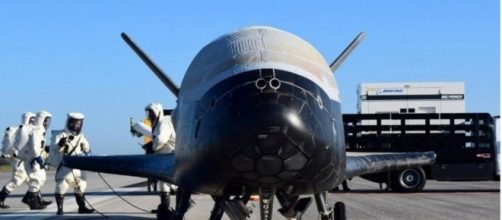SpaceX owned by Elon Musk is set to launch the USAF’s X-37B miniature spaceplane and the tentative date for this prestigious mission is scheduled for August. This has been officially announced by Air Force Secretary Heather Wilson. There have been four earlier X-37B missions but those were launched by a different setup.
Involvement of SpaceX
Daily Mail UK reports that neither the Air Force nor SpaceX has provided any details about the contract pertaining to X-37B even though news about awarding of such contracts are usually made known before a flight.
The first launch contract for the USAF that was made public by SpaceX was made last year for a flight in 2018. Subsequently, there was another contract awarded in March and both these contacts are high-value ones in the region of $100-million each.
In May 2016, Elon Musk’s company was hired to launch a spy satellite aboard a Falcon 9 and the mission has already been completed. SpaceX has done yeomen service for space exploration and when adequate funds were not given to NASA, Musk stepped in with his proposal of sending supplies to the ISS and also of reusing rockets. In addition, he has plans to send men to Mars. Naturally, the combination of SpaceX and Musk means building new frontiers space exploration.
About the X-37B
The unmanned X-37B looks like a mini space shuttle. It was built by Boeing and blasted off in May 2015 from Cape Canaveral Air Force Station aboard an Atlas 5 rocket that was built by United Launch Alliance.
The USAF has two X-37B and one of these has conducted experiments for more than 700 days while in orbit. It was a part of a secretive program managed by a special team of the Air Force and has come back to Earth after successful completion of its mission that lasted more than 700 days. According to available information, it was programmed to carry out tasks related to risk reduction, experimentation, reusable space vehicle technologies etcetera. There is plenty of secrecy that surrounds the X-37B because it pertains to the test and evaluation of hardware related to intelligence.
Incidentally, the X-37B, or Orbital Test Vehicle, has had a checkered career. Its first flight was in April 2010 and the fourth was in May 2015. With every flight, its period of stay in space kept rising from 8 months for the first to 700 plus days (or slightly less than two years) for the fourth. The fifth mission is expected to be launched later this year.
Obviously, the X-37B is a project that the USAF is playing close to its chest. In view of the turbulent situation in the world, it is necessary to plan for the future and X-37B appears to be a step in that direction. It has been under testing from 2010 and with four successful tests behind it, the stage is set for still greater things.


